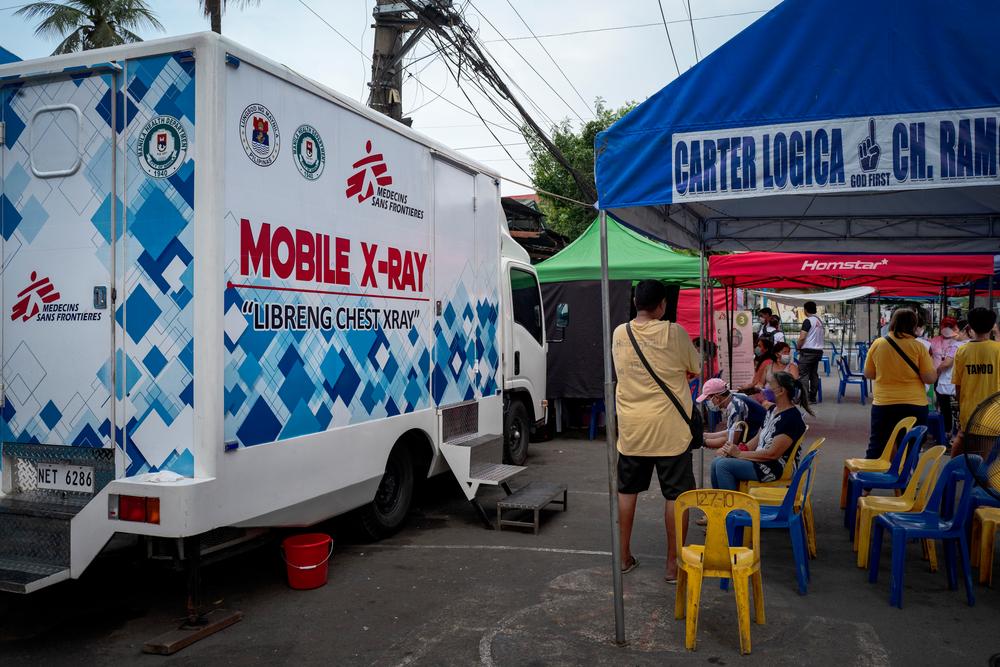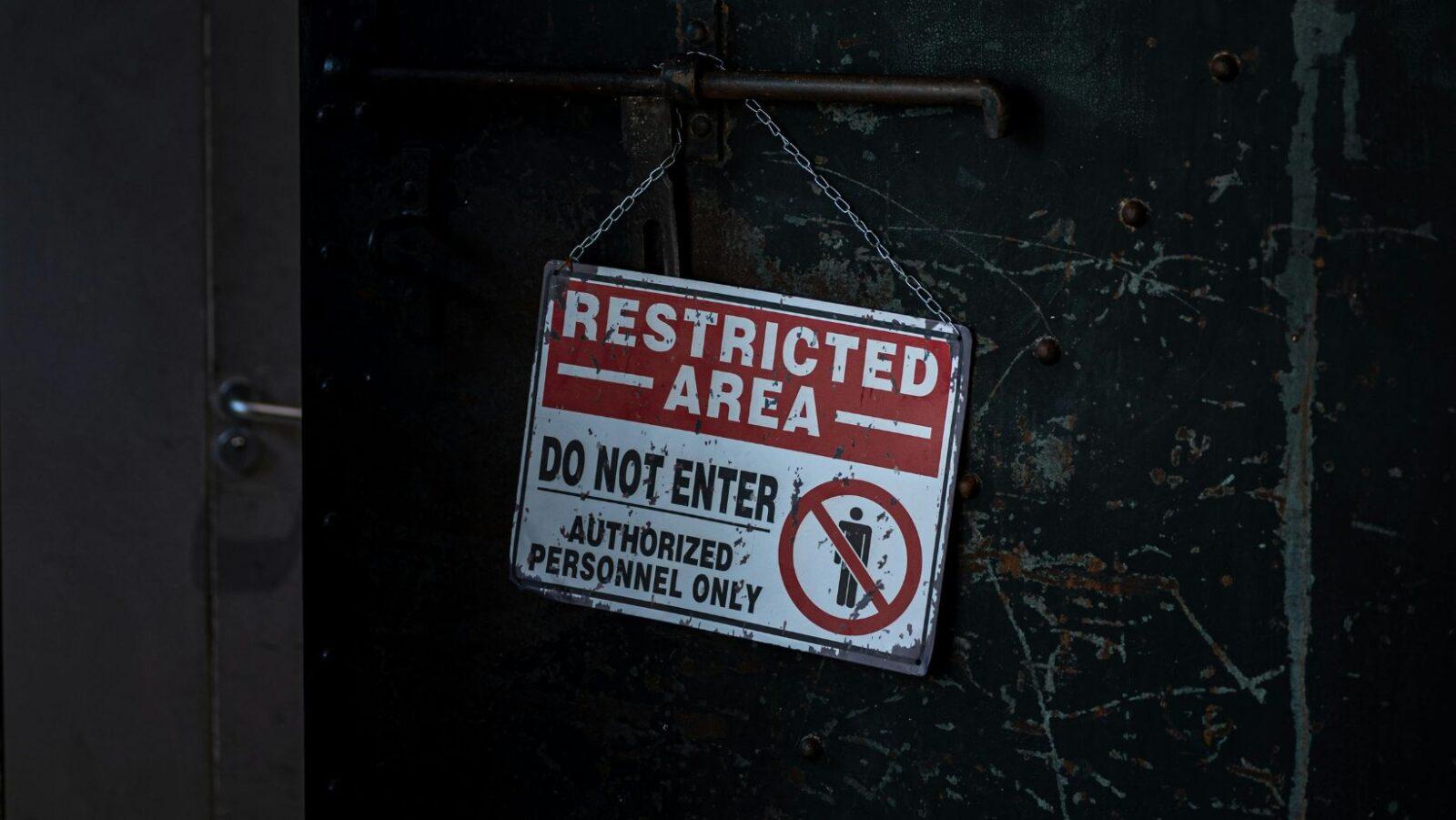
•The Philippines is among eight countries that accounted for more than 66% of TB cases worldwide in 2021.
•In 2022, the Department of Health (DOH) recorded 372,367 cases of TB in the country.
•Working closely with the Manila Health Department, international humanitarian organization Doctors Without Borders/Médecins Sans Frontières (MSF) conducts screening activities for tuberculosis in Tondo, Manila.
When Amalia, 42 years old, received her tuberculosis (TB) diagnosis, she thought she would end up like her mother. “My mother, it was the cause of her death,” she explained, holding back tears. But when the doctor explained that TB was treatable, Amalia committed to completing her six-month treatment.
Amalia lives in Tondo, Manila, where Doctors Without Borders/Médecins Sans Frontières (MSF) is working closely with local health authorities to get tuberculosis (TB) prevention, screening and treatment back on track.
The global fight against TB
The Philippines is one of eight countries that accounted for more than two-thirds of global TB cases in 2021; according to the WHO, 7% of the world’s TB cases can be found here. In 2022, the Department of Health (DOH) recorded 372,367 cases of TB.
Worldwide, the fight to end TB faced serious obstacles in the past few years. According to the World Health Organization (WHO), TB kills at least 1.5 million people each year. It was the deadliest infectious disease in the world before COVID-19 occurred, which does not mean that TB is slowing down now. In fact, TB deaths and disease increased in 2021, reversing years of decline between 2005 and 2019. Fewer people were diagnosed and treated, and fewer resources were available for essential TB services.
The TB bacterium spreads through the air when an infected person sneezes, coughs or talks, and infection typically attacks the lungs. It can be easily transmitted in confined spaces, and can remain dormant in the body for months or years without becoming active disease.
TB typically puts those with weakened immune system at highest risk. Because of this as well as the mode of transmission, social factors such as poverty — particularly in densely populated and confined urban areas such as Tondo — increases the risk of spread. There are also barriers for those seeking treatment (such as the duration of the treatment and the stigma around the disease) which compound any move to eradicate TB.
All these factors contribute to the high incidence of TB in the Philippines.
Adapting TB strategies to the pandemic
As with the rest of the world, the pandemic posed many challenges for TB in the Philippines. Aurelien Sigwalt, Head of Mission for Doctors Without Borders in the Philippines, shares, “During the pandemic, there was a decline in TB services worldwide, and it was very likely a similar situation in the Philippines. People couldn’t undergo diagnosis and treatment as easily during the lockdowns, and people were sharing confined spaces for weeks on end. This is why we decided to collaborate with the Manila Health Department, to support TB screening and refer TB-positive patients to health centers for treatment.”
Trisha Thadhani is a TB doctor for Doctors Without Borders, and in speaking with people during the screening activities, she has learned some startling, albeit unsurprising, facts. “In 2021, it seems not too many people were started on their treatment, because the health centers were focused on a lot of other problems that were not TB. When you have patients who aren’t on treatment, they have higher propensity to transmit the disease within the household, which is also an important thing to look for.”

Catching up with TB screening in Manila
In the City of Manila, Doctors Without Borders began a partnership with the Manila Health Department (MHD) in 2021, focusing on activities such as active case finding (ACF), health promotion and patient support for people with TB in the slums of Tondo.
Screening for active TB cases requires several steps, including a chest x-ray and sputum collection, and medical evaluation. Supporting the screening process is a software that uses artificial intelligence, designed to analyze chest x-rays and quickly recognize signs of TB. With this computer-aided diagnosis (also called “CAD4TBv.7”), the medical team is better equipped to evaluate the likelihood of someone having TB, and patients can be treated accordingly.
While the project is intended for the general population of Tondo, the ACF in particular targets people aged 15 and above. Those aged 14 and below, especially the household contacts of confirmed TB cases in the community, are also evaluated. As Thadhani explains, “We see if they are at risk for TB, or could benefit from a preventive treatment, or if they are already sick with TB, and then intervene if needed as well.”

Supporting patients in Tondo
Doctors Without Borders has screened over 6,500 people across various barangays of Tondo in the last ten months, and an average of 5% of those screened are confirmed positive for TB. This significant figure tends to confirm the organization’s initial hypothesis of a likely increase in TB cases following the COVID-19 pandemic.
To help curb the spread of TB in these densely populated communities, Doctors Without Borders works closely with the health centers in Manila, checking if patients who test positive have been referred for or have started treatment. If the patients have not started treatment, Doctors Without Borders teams encourage them to do so, providing further health education and counseling as needed.
The teams also try to persuade household contacts to get screened as well, and children who undergo preventive treatment must do so for three months. Teams who visit the communities go from house to house, explaining why screening and treatment are necessary even if one does not feel any symptoms.
“Doctors Without Borders is currently focused on the project in Tondo, Manila, where the project is intended to run until at least 2025,” the organization told FlipScience in an email interview. “Our project is just one of many initiatives in the Philippines, by both government and private entities, that are working on rekindling a comprehensive national TB program, which was heavily impacted by the COVID-19 pandemic here as much as in many other countries.”

Misconceptions and missed opportunities
The process of treatment is arduous, for both patients and staff. Patients must undergo six months of medication, with regular checkups at the health center.
Adding to the difficulty are the misconceptions and stigma surrounding TB. According to Ash Solaiman, health promotion supervisor for Doctors Without Borders, people in the community think that “those who are likely to have TB are drug addicts, smokers or that one can catch the disease by shaking hands with someone who is TB-positive or sharing the same clothes. One important part of our work is to remind the community of key facts: One may get TB when an infected person sneezes, coughs or talks, not by sharing items.”
Undeniably, community engagement is a big factor. While some Tondo residents will voluntarily visit an active case-finding activity to get their free chest x-ray, many more are encouraged by the health promotion team, which walks through the streets of every barangay, knocking on doors and announcing the activity. On other days, the same team walks the same streets to raise awareness around TB in the community, address misconceptions, and work on reducing stigma.
The long road ahead
“All these strategies are implemented because we see the importance of proximity to the patient, and close involvement with the community,” states the organization. “But ours is only one project among other initiatives addressing TB.”
In the Philippines as in other countries, the fight against TB would benefit greatly from increased funding. Patient education, especially on preventing the further spread of TB, would go a long way as well.
“[TB] is curable,” stresses Solaiman, “so it is essential to get screened, and complete the treatment.” -MF/Médecins Sans Frontières (MSF)









